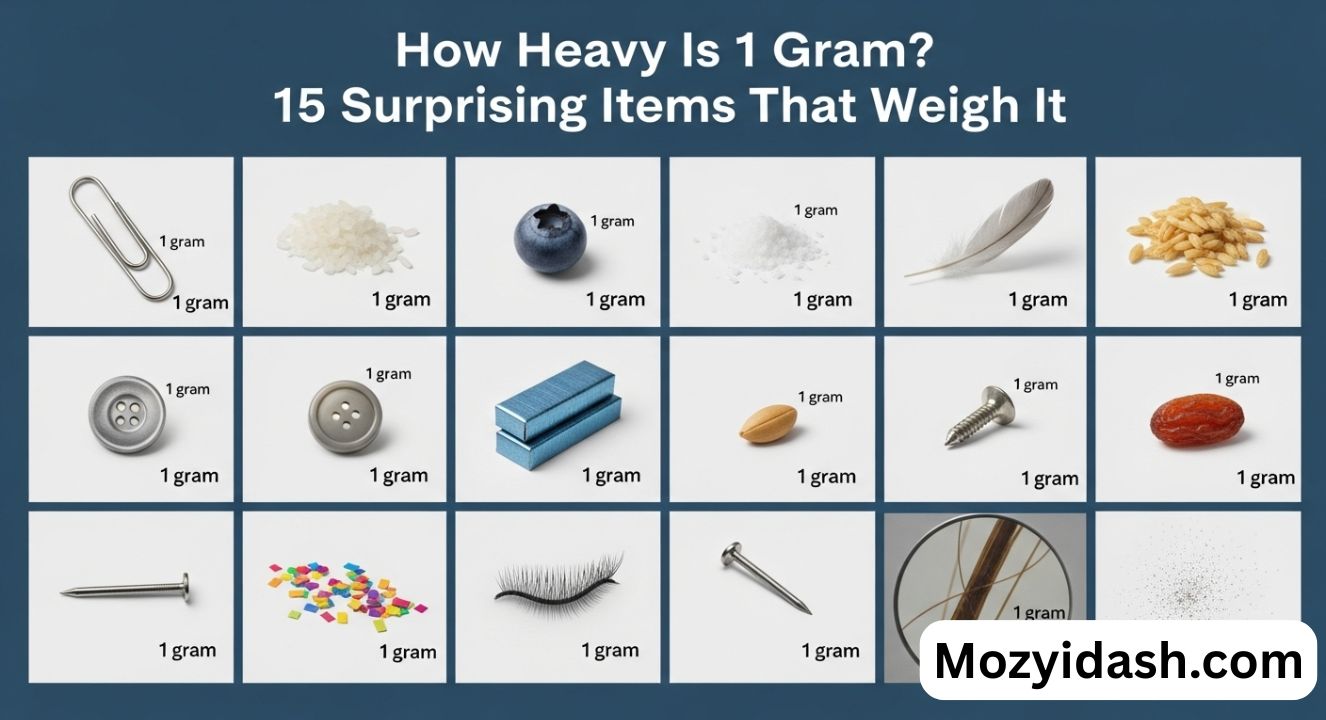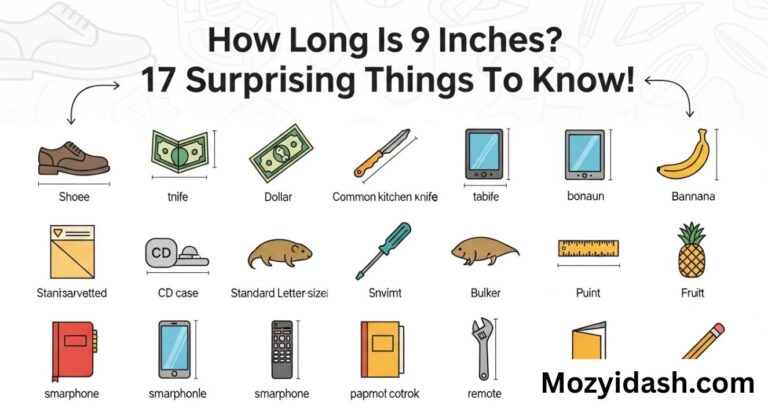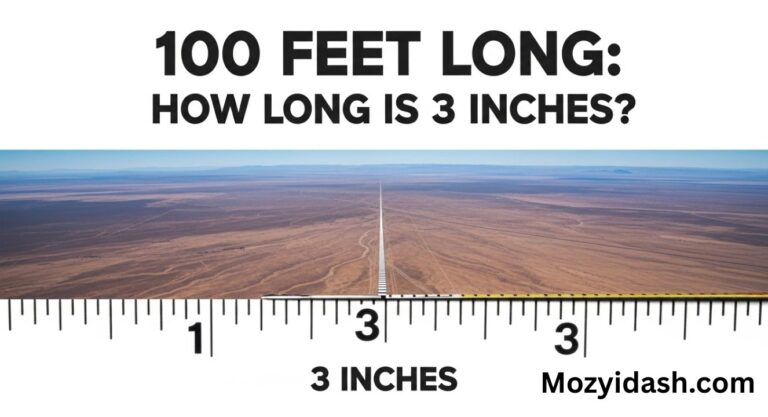How Heavy Is 1 Gram? 15 Surprising Items That Weigh It
How heavy is 1 gram means understanding a very small unit of weight. It is part of the metric system weights and equals one-thousandth of a kilogram. It helps measure lightweight objects like paper clips or water drops.
You might be surprised how many everyday items that weigh 1 gram are around you. From a dollar bill to a jelly bean, tiny things can show what a gram feels like. Let’s explore these small measurements in daily life together.
Knowing how heavy is 1 gram helps in cooking, science, and travel. It is often used in kitchen measurements and scientific measurement units. This small weight makes a big difference in understanding weight measurements.
How Heavy Is 1 Gram?
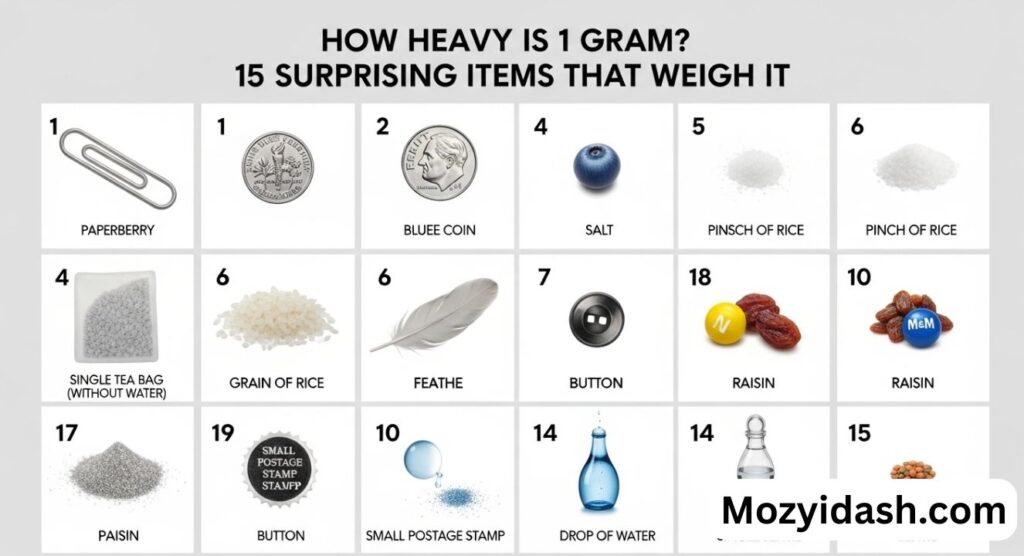
Before we explore the objects that weigh 1 gram, let’s understand what a gram really is. A gram is a unit of mass in the metric system, and it represents one-thousandth of a kilogram. To Americans more familiar with ounces and pounds, 1 gram equals approximately 0.0353 ounces or 0.0022 pounds. This might sound insignificant, but it’s an important unit in understanding weight measurements, especially in fields like nutrition, science, and medicine.
When you look at 1 gram vs ounce comparison, it becomes clear how small it really is. One ounce equals about 28.35 grams, meaning it would take over 28 one-gram items to equal a single ounce. In other words, a paperclip, a jelly bean, or a dollar bill are all tiny compared to an ounce of anything.
Below is a simple conversion table for reference weight examples that helps visualize this relationship:
| Measurement | Equivalent to 1 Gram |
| Ounces | 0.0353 oz |
| Pounds | 0.0022 lb |
| Milligrams | 1,000 mg |
| Kilograms | 0.001 kg |
| Teaspoon of sugar | About ¼ teaspoon |
In daily life, gram-based items show up in recipes, on product labels, and in household measurement guides. For instance, a nutrition label on food packaging may mention “per 100 grams,” and a small snack portion could easily weigh around 10 grams. Learning how to estimate 1 gram without a scale gives you a practical skill that can help in the kitchen or even when measuring supplements.
When thinking about what does 1 gram feel like, it’s almost weightless to the touch. It’s similar to holding a small raisin, a paperclip, or a dollar bill—tiny, light, but definitely present. These small measurements in daily life remind us how precision plays an important role in both science and everyday decisions.
Household Items That Weigh 1 Gram
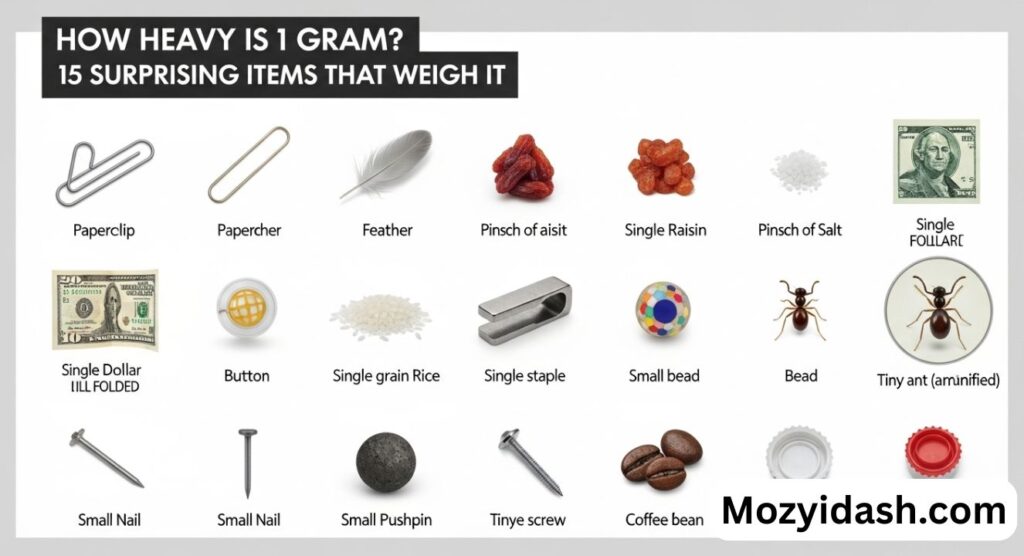
Now that we understand how heavy is 1 gram, let’s explore everyday items that weigh 1 gram. These are light objects examples that you can easily find around your home or office. They help you estimate 1 gram without a scale by giving you visual and tactile comparisons.
Each of these items equal to one gram has been carefully chosen to represent different materials—metal, paper, food, and plastic—so you can appreciate how weighing tiny items works across different categories.
1. 1 milliliter (ml) of Water
Water is the best and most precise example of 1 gram weight. Under standard temperature and pressure, 1 milliliter of water weighs exactly 1 gram. This is because of the unique density of water, which makes it an ideal reference in scientific measurement units and kitchen measurements alike.
This simple relationship—1 ml = 1 gram—is often used in cooking and chemistry. It’s one of the few common weights references that is completely consistent. For example, when following a recipe, if it asks for 250 ml of water, you know that’s 250 grams in weight. It’s that straightforward.
For those who like to experiment, you can try measuring small weights of water using droppers. Around 20 drops of water from a medicine dropper make up roughly 1 milliliter, or 1 gram.
2. A US Dollar Bill
If you live in the United States, you already have a perfect one gram weight comparison in your wallet. Every U.S. dollar bill, regardless of denomination, weighs about 1 gram. Whether it’s a one-dollar or hundred-dollar note, the dollar bill weight remains consistent due to its uniform cotton-linen material.
This makes it a reliable and convenient reference weight example for measuring small weights at home. If you stack 10 dollar bills together, you get approximately 10 grams, and 454 bills equal about 1 pound. The US dollar is not just a currency—it’s also a practical tool for understanding lightweight objects.
3. A Thumbtack
A standard thumbtack or pushpin is another perfect item equal to one gram. These small metal or plastic pins are commonly used to secure papers on corkboards or walls. While there can be slight variations based on material and size, the average thumbtack weight sits close to 1 gram.
They are useful as micro measurements because of their uniform shape and easy availability. If you have a box of thumbtacks, you can even estimate their total weight by counting them, giving you a quick method for understanding weight measurements in real life.
4. A Paper Clip
When people talk about objects that weigh 1 gram, the paper clip is often the first example that comes to mind. The small, No. 1 size paper clip weight is about 1 gram, making it one of the most common gram-based items used in classrooms and offices.
Interestingly, the paper clip has become a universal benchmark for small objects weight examples because it’s easy to visualize and consistent in design. If you have 10 paper clips, that’s about 10 grams—a practical common weights reference anyone can use.
5. Cap of a Ball Pen
If you’ve ever held a ballpoint pen cap, you’ve probably noticed how incredibly light it feels. The cap of a standard pen, especially the popular Bic type, typically weighs around 1 gram. The weight might vary slightly depending on material and design, but it serves as an excellent one gram weight comparison.
It’s fascinating how even something as simple as a pen cap demonstrates light objects examples in our daily environment. For students or office workers, it’s an effortless way to grasp how heavy is 1 gram in practical terms.
6. Silica Gel Packets
Those tiny packets labeled “Do Not Eat” that come inside shoe boxes and electronics packages are silica gel packets, and each one usually weighs about 1 gram. They’re filled with silica beads, which absorb moisture and protect items from humidity.
These packets represent a great example of 1 gram weight and are among the most overlooked everyday items that weigh 1 gram. In industries like shipping and storage, measuring small weights like this can be essential to maintaining product quality.
7. A Piece of Chewing Gum
A piece of chewing gum—before it’s chewed—typically weighs around 1 gram. This might vary slightly between brands, but it’s a great food-related item equal to one gram. Gum pieces are perfect for understanding weight measurements in edible form.
In fact, many nutritionists use gum and raisins as examples when explaining small measurements in daily life, because both are easy to visualize and handle. These lightweight objects help people learn how to estimate 1 gram without a scale while also appreciating portion sizes.
8. A Small Sized Birthday Candle
If you’ve ever placed candles on a cake, you’ve handled another perfect one gram weight comparison. The small, two-inch birthday candles weigh approximately 1 gram each. These candles are made of wax and designed to be extremely lightweight, adding color and brightness without much mass.
This is a fun reference weight example because it connects celebration with scientific measurement units. A pack of 10 such candles would weigh around 10 grams, making it a useful visual for objects under 5 grams and above.
9. A Single Grape
A small, seedless grape is one of nature’s simplest examples of 1 gram weight. Although size and type matter, a small green or red grape often weighs close to 1 gram. Grapes remind us that even in nature, common weights reference appear in the foods we eat.
When comparing 1 gram vs ounce, it’s clear how small that is—28 grapes weighing 1 gram each would equal roughly an ounce. It’s a tasty way to visualize how heavy is 1 gram while also appreciating natural variation in light objects examples.
10. One Raisin
A raisin is essentially a dried grape, and just like its fresh counterpart, it weighs about 1 gram. This makes it another convenient and edible item equal to one gram. Because of its dry texture and smaller size, a raisin offers a more compact way to measure small objects weight examples.
In baking or cooking, raisins often help demonstrate measuring small weights and micro measurements. Chefs sometimes use these as quick references when they need a visual sense of tiny ingredient amounts.
11. A Piece of Paper Towel
A single sheet of paper towel, when separated from the roll, usually weighs close to 1 gram. While different brands vary slightly in thickness and texture, most standard household paper towels fit this one gram weight comparison.
They are also among the easiest household measurement guides because everyone has them at home. When learning how to estimate 1 gram without a scale, a paper towel is one of the simplest and most accessible everyday items that weigh 1 gram.
12. A Plastic Bottle Cap
If you take the cap of a plastic water bottle, you’re holding another object that weighs 1 gram. These caps are lightweight yet durable, designed to seal liquid containers tightly without adding bulk. They show how modern packaging technology embraces lightweight objects for convenience.
Interestingly, about 500 bottle caps weigh approximately half a kilogram, making this one of the most useful reference weight examples for understanding weight measurements in plastics and packaging industries.
13. 10 Toothpicks
Each toothpick weighs about 0.1 grams, so ten together total approximately 1 gram. This makes them a creative and precise example of 1 gram weight. They’re also easy to handle, consistent in size, and commonly found in every kitchen or restaurant.
Toothpicks demonstrate measuring small weights beautifully, showing how several objects under 5 grams can combine to represent a meaningful measurement. It’s a lesson in cumulative weight and precision.
14. One-Quarter Teaspoon of Sugar
In kitchen measurements, ¼ teaspoon of granulated sugar equals approximately 1 gram. This is one of the most practical common weights references, especially for cooking or baking without a scale.
Different types of sugar—brown, powdered, or raw—have slightly different densities, but for gram-based items, this is one of the easiest comparisons. You can also apply this same logic to salt or flour, which weigh similarly when measured in small teaspoons.
15. A Jelly Bean
A single jelly bean weighs about 1.1 grams, making it nearly identical to one gram. These colorful candies are delightful light objects examples and also perfect for illustrating what does 1 gram feel like.
When you hold a jelly bean, you can feel that tiny weight—barely noticeable, yet real. It’s a fun, visual, and delicious way to learn about small measurements in daily life. It also shows how weighing tiny items can connect curiosity with something enjoyable.
16. A Standard Postage Stamp
When you think about objects that weigh 1 gram, the humble U.S. postage stamp fits perfectly. A single stamp, made of thin adhesive paper, weighs roughly 1 gram or even slightly less depending on the paper type and ink. It’s one of the most practical reference weight examples because stamps are easy to find and consistent in size.
A fun fact for the U.S. audience is that about 454 stamps would weigh approximately one pound, offering a perfect one gram to pound comparison. Stamps also serve as an excellent educational example when teaching scientific measurement units or understanding weight measurements to children, as they combine art, history, and lightness all in one tiny square.
17. A Small Paper Straw
With the growing awareness of environmental issues, paper straws have replaced many plastic ones, and surprisingly, a small paper straw is another example of 1 gram weight. A typical short straw, around 5 inches in length, weighs close to 1 gram due to its lightweight material and hollow structure. It’s one of those light objects examples that most people wouldn’t think about until they try holding one in their hand.
Paper straws represent the idea of objects under 5 grams beautifully. They’re part of our daily lives—used in drinks, cafés, and fast-food places—but they also help us understand how heavy is 1 gram through a tactile experience. They feel almost weightless, but multiply them by 50, and you suddenly have 50 grams—proof that everyday items that weigh 1 gram can teach practical math in a fun way.
18. A Standard Plastic Button
Buttons are part of nearly every wardrobe, but few realize that a standard plastic shirt button typically weighs about 1 gram. This makes it an excellent gram-based item for understanding small measurements in daily life. Whether it’s sewn onto a shirt, jacket, or blouse, the button provides a familiar and accessible way to grasp what does 1 gram feel like.
In the world of textiles and design, professionals often rely on measuring small weights like this for quality control and uniformity. Buttons are crafted with such precision that their consistency can be used as a quick reference weight example. When you collect ten of them in your hand, you’re holding roughly 10 grams—making it a perfect one gram weight comparison for fashion and tailoring students.
Read Also :
Understanding the True Meaning of 1 Gram
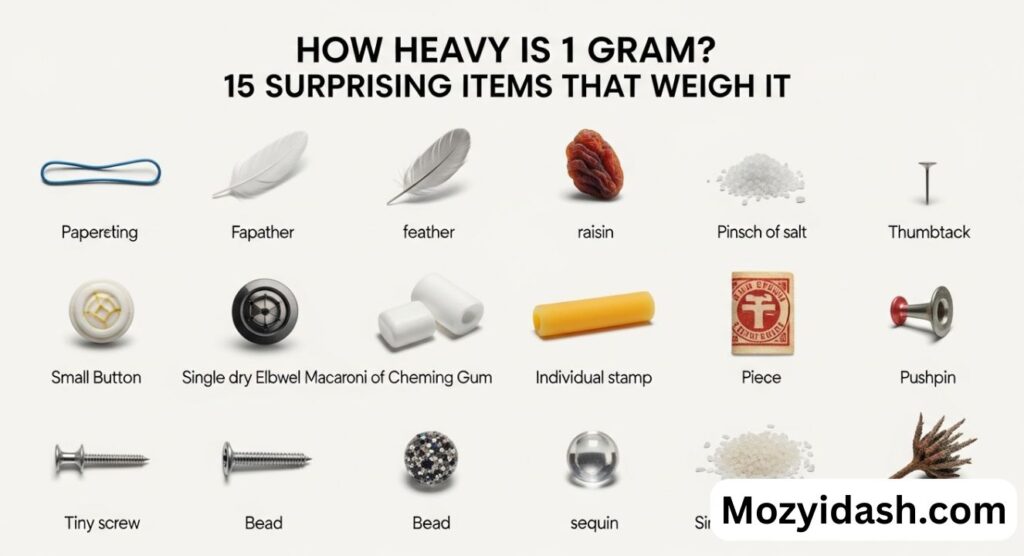
The gram is one of the most common scientific measurement units, yet many people find it hard to imagine how small it really is. Defined in the metric system weights, one gram equals one-thousandth of a kilogram, making it a base unit for everyday and scientific use worldwide.
For U.S. readers, 1 gram to ounce conversion helps visualize this better — one gram equals 0.0353 ounces. This simple comparison bridges the gap between metric and imperial systems, helping people understand how heavy is 1 gram when comparing it with familiar objects like a paper clip or dollar bill.
Read Also : 17 Surprising Things That Weigh 30 Kilograms
Why Knowing Small Weights Matters in Daily Life
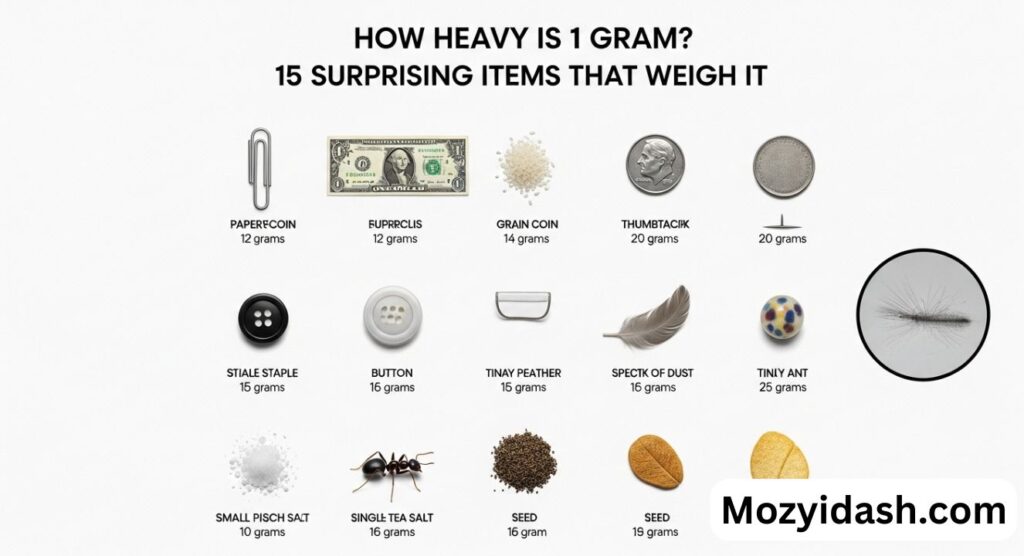
Understanding light objects examples such as things that weigh 1 gram can make a real difference in daily routines. Whether you’re cooking, mailing letters, or measuring medication, recognizing everyday items that weigh 1 gram helps ensure precision without relying on scales.
It also improves awareness of small measurements in daily life, allowing people to make accurate choices in kitchen measurements or craft projects. Knowing what weighs 1 gram builds intuition about micro measurements that influence nutrition, packaging, and even postage calculations.
Comparing 1 Gram to Other Weight Units
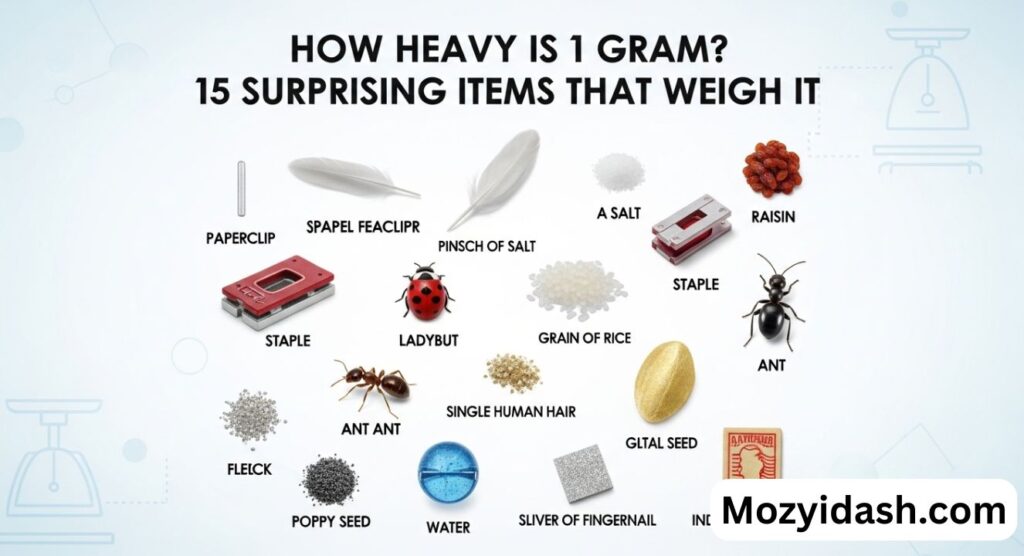
When comparing 1 gram vs ounce, the difference might seem minor, but it’s essential in understanding common household items weight. One ounce equals about 28.35 grams, which means a single gram is incredibly light — nearly the weight of a dollar bill or a small grape.
You can also use a 1 gram to pound conversion for larger comparisons. Since there are about 454 grams in a pound, this demonstrates how minute a single gram truly is. These reference weight examples make understanding weight measurements more practical for students, cooks, and everyday users.
Everyday Situations Where 1 Gram Matters
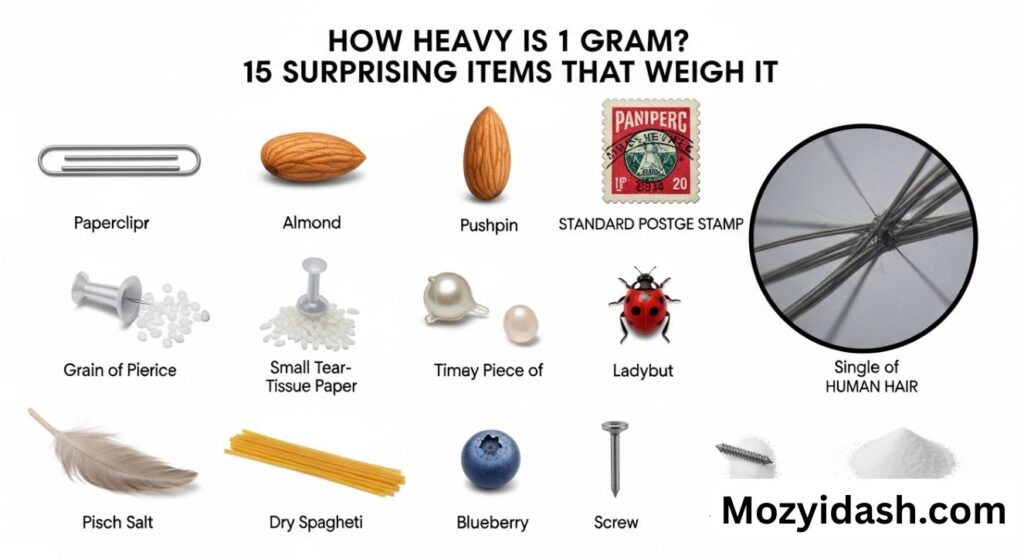
In kitchen measurements, 1 gram can represent the difference between a perfect recipe and an off-tasting dish. Knowing items equal to one gram allows home cooks to measure ingredients accurately, especially for spices, baking powder, or coffee.
Similarly, in scientific or medical settings, weighing tiny items like pills or powders often requires accuracy down to the gram. Understanding what does 1 gram feel like ensures precise dosing, packaging, and safe handling — proving that even small weights have big impacts.
Estimating One Gram Without a Scale
If you don’t have a scale, you can still learn how to estimate 1 gram without a scale using common weights reference objects. Everyday items like a paper clip weight, dollar bill weight, or raisin offer consistent and reliable 1 gram examples for home experiments.
Practicing with lightweight objects strengthens your sense of measuring small weights naturally. Over time, you’ll develop a better understanding of gram-based items and their importance in small measurements used in cooking, crafting, and science projects.
FAQ,s
What weighs 1 gram?
A small paper clip, a U.S. dollar bill, or a raisin each weigh about 1 gram, making them simple everyday items that weigh 1 gram.
What is an example of a gram?
An easy example of a gram is 1 milliliter of water, which equals exactly one gram under standard conditions of temperature and pressure.
How much does 1 gram look like?
1 gram looks tiny—about the size of a small grape or paper clip, perfect for understanding small objects weight examples.
How heavy is 1 gram of gold?
1 gram of gold weighs the same as any 1-gram item but holds great value—typically around $70–$80 USD, depending on the gold market rate.
Final Thoughts
Learning how heavy is 1 gram gives you a deeper understanding of the world around you. From a US dollar bill to a grape or paperclip, these examples of 1 gram weight show how scientific measurement units intersect with everyday life. Whether you’re using kitchen measurements, studying metric system weights, or simply satisfying your curiosity, these gram-based items help you visualize what such a small measurement really means.
In essence, a gram is more than just a number—it’s a bridge between precision and practicality. When you look around, you’ll see countless lightweight objects, from a pen cap to silica gel packets, all silently demonstrating the importance of understanding weight measurements. So the next time you wonder what weighs 1 gram, just remember these familiar objects that weigh 1 gram.

